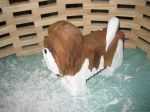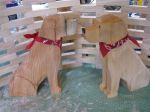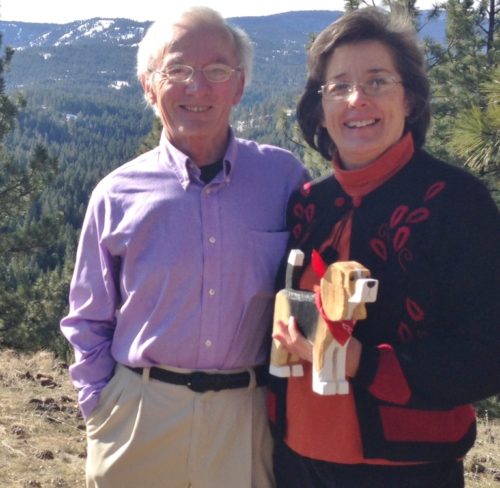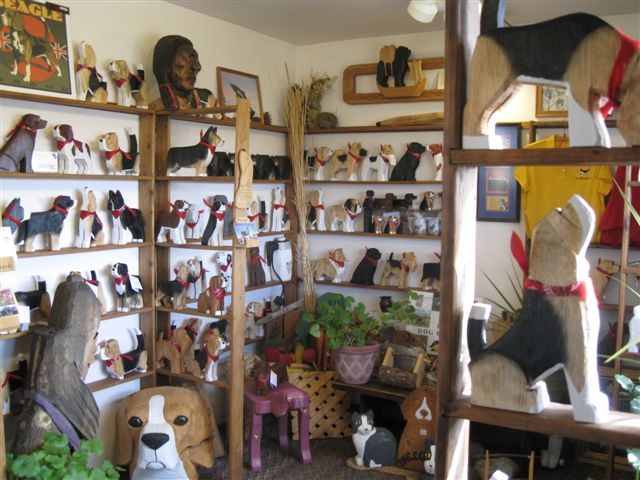
Continuing our series that offers tidbits about different dog breeds we feature 3 more in this post.
But first, a note about our sources of information. Much of what we know about dogs is from years of observing & reading about them. Sources have been The AKC Gazette, Dog Fancy Magazine, Bark Magazine, Dog World Magazine and what we offer refer to as the dog bible, The Atlas of Dog Breeds of the World by Wilcox & Walkowicz.
The Shih Tzu
This dog’s roots are from Tibetan Lhasa dogs. The Shih Tzu’s refinement however, occured in Chian where the smaller “lion dog” was preferred by the nobles who enjoyed them as loving palace companions. There the Shih Tzu was bred for a life of leisure.

It wasn’t until the early 1900’s that Shih Tzus came to be known outside of China, probably first appearing in England where the breed won its 1st dog show championship in 1947. The breed was not recognized in North American show rings until the 1960’s.
Since then the Shit Tzu, which weighs from 9-16 pounds and stands between 8 & 11 inches tall, has become a popular people-pleasing companion just about everywhere. One description of this breed includes the following attributes of the Shih Tzu, ” lion head, bear torso, camel hoof, feather-duster tail, palm leaf ears, rice teeth, pearly petal tongue & movement like a goldfish.”Note: We do not yet have the Shih Tzu listed on our website as being a breed available for order as a chainsaw created sculpture. Please send us an e-mail if more information is desired.
Labrador Retriever
The Labrador comes in three coat colors; yellow, chocolate and black. All three colors can be born in one litter of puppies.
Throughout the world most ships had dogs on board. As far back as the 17th century it is known waterdogs were used by fisherman & hunters in Canada where the Labrador Retriever has its roots. The dogs were sold into England from some of the Canadian ships during the early 1800’s. Later in the century, a heavy dog tax in Canada reduced the number of dogs in that country, and, with corresponding strict English quarantine laws, importation of Canada’s waterdogs to England was virtually eliminated. Modern development of the breed therefore took place in England with dogs whose lineage was from those early Canadian retrievers.
A versatile water, land, campanion, or service dog, the labrador has enjoyed great popularity. With its keen desire to please, its intelligence, docile nature & short coat the Labrador Retriever is a sturdy, low-maintenance family dog or hunting companion.

Saint Bernard
Most everyone is aware of this dog’s long heritage as a mountain rescue dog of the Swiss Alps. The name comes from the name of a 10th century monastery, Hospice du Grand St. Bernard, located in the Alps on a high mountain pass near the Italian border. This monastery is one of the highest and oldest human settlements in Europe and its mission as originally led by a monk name Bernard was to help the poor & needy pilgrims who traveled through the pass on their way to Rome.
The monks enlisted the aid of their Saint Bernard dogs to assist and rescue travelers trapped in the snow. With their superior noses, weather-resistant coats, sure-footedness & strength these dogs could go where the monks could not.
These early Saint Bernards were much smaller than those we know today. By the 1800’s the monks had an extensive breeding program and gradually the dog’s size increased. Today’s Saint Bernard can reach 200 pounds or more.

Saint Bernards may look like gentle giants, which they can be with rigorous attention to selection for gentle temperament and early training. Like some of its cousins, the Saint Bernard has a wet mouth, which means it drools. Owners need to be aware that slobber is part of life when a Saint is around!



